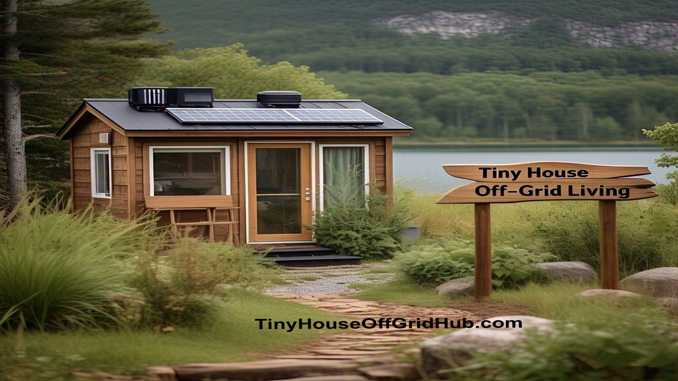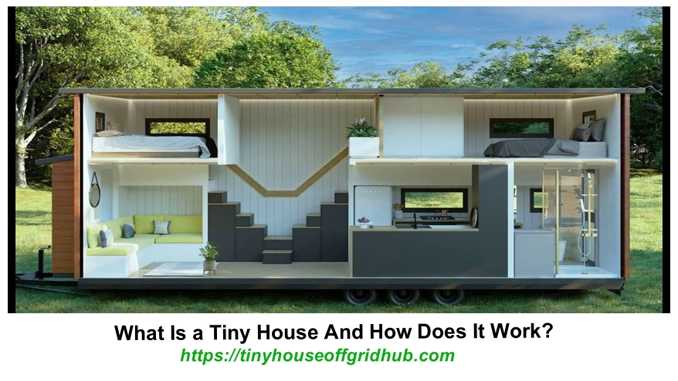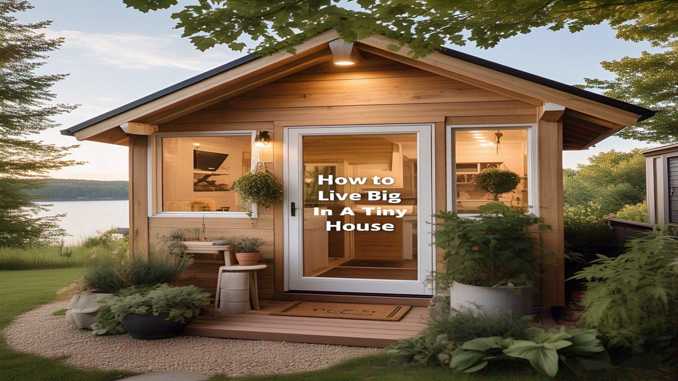Building an off-grid tiny home offers a path to a simpler, more sustainable lifestyle. However, understanding the financial aspects of this endeavor is crucial before diving in. The cost of constructing an off-grid tiny home varies widely, depending on factors like size, materials, location, and whether you’re tackling the project yourself or hiring professionals.
For a DIY build, you might spend anywhere from $30,000 to $60,000. If you opt for professional construction, the cost could range from $50,000 to $100,000 or more.
These figures, however, only scratch the surface.
To truly grasp what you’re getting into, we need to break down the costs associated with each aspect of building an off-grid tiny home.
The Basic Structure
The foundation of your tiny home will likely be your largest expense. Here’s a rough breakdown of what you might expect to spend:
- Trailer (if mobile): $3,000 – $7,000
- Framing: $5,000 – $10,000
- Roofing: $1,000 – $3,000
- Siding: $2,000 – $5,000
- Windows and doors: $2,500 – $5,000
- Insulation: $1,500 – $3,000
This brings the total for the basic structure to somewhere between $15,000 and $33,000. Keep in mind that these are estimates and can fluctuate based on your specific choices and location.
The size of your tiny home significantly impacts both your living space and your budget. Every square foot counts, so you’ll need to find the right balance between having enough space to live comfortably and keeping your costs manageable.
Interior Finishes
The interior of your tiny home allows you to express your personal style. However, customization often comes with a price tag.
Here’s what you might spend on interior finishes:
- Flooring: $500 – $2,000
- Cabinetry and countertops: $2,000 – $5,000
- Bathroom fixtures: $1,000 – $3,000
- Kitchen appliances: $2,000 – $5,000
- Lighting and electrical: $1,500 – $3,000
- Plumbing: $1,000 – $3,000
This brings the total for interior finishes to between $8,000 and $21,000. These numbers can fluctuate based on your choices.
You might decide to splurge on a high-end kitchen but save money with more basic bathroom fixtures, for example.
Off-Grid Systems
The systems that make your tiny home self-sufficient are a significant part of your budget:
- Solar power system: $5,000 – $15,000
- Battery bank: $2,000 – $5,000
- Water collection and filtration: $1,500 – $4,000
- Composting toilet: $1,000 – $2,500
- Propane system (if used): $500 – $1,500
The total for off-grid systems typically ranges from $10,000 to $28,000. While it might be tempting to cut corners here to save money, investing in quality off-grid systems can save you money and prevent headaches in the long run.
Consider the long-term efficiency and reliability when making these choices.
Additional Costs
Several other expenses often get overlooked when budgeting for an off-grid tiny home:
- Land purchase or lease: This varies widely by location
- Permits and inspections: $500 – $2,000
- Tools and equipment (if DIY): $1,000 – $3,000
- Transportation of materials: $500 – $2,000
- Furnishings: $1,000 – $5,000
Excluding land costs, these additional expenses could add $3,000 to $12,000 to your budget. The cost of land is highly variable and depends on factors like location, size, and whether you’re buying or leasing.
Cost-Saving Strategies
If these numbers seem daunting, don’t worry. Several strategies can help reduce costs when building your off-grid tiny home:
DIY vs. Professional Build
Doing much of the work yourself can significantly cut labor costs, potentially saving you 20-40% of the total cost. However, be honest about your skills and the time you have available.
Some tasks might be better left to professionals.
Reclaimed Materials
Using reclaimed or recycled materials for flooring, cabinetry, or even structural elements can reduce costs and add character to your home. Check out local salvage yards, online marketplaces, or ask around in your community for materials people might be getting rid of.
Simplify Your Design
A straightforward design with fewer custom elements will be less expensive to build. Consider whether you really need that bay window or custom-built furniture.
Prioritize Your Needs
Focus on essential systems first and add luxuries later as your budget allows. You can always upgrade or add features down the line.
Buy Used
Look for gently used appliances, fixtures, or even off-grid systems to save money. Just be sure to thoroughly inspect any used items before purchasing.
Real-World Example: The Johnson Family’s Off-Grid Tiny Home
Let’s look at a real-world example to see how these costs play out. The Johnson family, consisting of two adults and two children, decided to build their own off-grid tiny home in rural Colorado.
They aimed to create a 300 square foot home that would be completely self-sufficient.
Here’s a breakdown of their costs:
- Basic structure (including trailer): $28,000
- Interior finishes: $15,000
- Off-grid systems: $22,000
- Additional costs (permits, tools, etc.): $5,000
Their total cost came to $70,000. The Johnsons kept costs down by doing much of the work themselves, using some reclaimed materials, and simplifying their design.
They chose to invest in high-quality off-grid systems, believing this would pay off in the long run.
Planning Your Budget
When planning your budget for an off-grid tiny home, consider the following steps:
- Research and price everything: Create a detailed list of all components and research their costs.
Don’t forget to factor in shipping costs for materials.
- Add a buffer: Include a 10-20% buffer in your budget for unexpected expenses.
There will always be surprises, and it’s better to be prepared.
- Prioritize your spending: Decide what’s most important to you and allocate more of your budget to those areas.
Maybe you care more about a robust solar system than fancy kitchen appliances.
- Consider long-term costs: Factor in maintenance and replacement costs for systems and appliances.
Some items might be cheaper upfront but cost more in the long run.
- Explore financing options: Look into tiny home-specific loans, personal loans, or even crowdfunding if necessary.
Be sure to understand the terms and interest rates of any financing you consider.
- Plan for land costs: Whether buying or leasing, don’t forget to factor in the cost of where your tiny home will be located. This can be a significant part of your overall budget.
The Hidden Costs of Off-Grid Living
While building your off-grid tiny home is a significant expense, it’s important to also consider the ongoing costs of this lifestyle:
Maintenance and Repairs
Off-grid systems need regular maintenance and occasional repairs. Set aside money each month for these expenses.
Propane or Other Fuel
If you use propane for heating or cooking, factor in regular refills. The cost can vary depending on your location and usage.
Water Delivery
If you can’t collect enough rainwater, you may need to pay for water delivery. This cost can add up, especially in drier climates.
Internet and Communication
Staying connected off-grid often needs specialized (and potentially costly) solutions. Research options like satellite internet or cellular boosters.
Transportation
Living off-grid often means being further from amenities, potentially increasing transportation costs. Factor in the cost of fuel and vehicle maintenance.
The Benefits of Off-Grid Tiny Home Living
Despite the costs, many find that building an off-grid tiny home is a worthwhile investment. Here are some benefits to consider:
Reduced Living Expenses
After the initial investment, many off-grid tiny home dwellers report significantly lower monthly expenses. You’ll likely spend less on utilities, property taxes, and maintenance compared to a traditional home.
Environmental Impact
Off-grid tiny homes have a much smaller carbon footprint than traditional homes. If reducing your impact on the environment is important to you, this can be a significant benefit.
Freedom and Flexibility
An off-grid tiny home can give you the freedom to move if you choose a mobile design. You have the ability to live where you want, how you want.
Simplified Lifestyle
Many report increased life satisfaction from downsizing and simplifying. Living in a tiny home can help you focus on what’s truly important to you.
Building an off-grid tiny home is a significant investment, both financially and in terms of time and effort. While costs can vary widely, most people can expect to spend between $30,000 and $100,000 for a finished off-grid tiny home.
With careful planning, smart choices, and a willingness to do some of the work yourself, it’s possible to create your dream home on a budget that works for you. The path to off-grid tiny living is as much about the experience and the lifestyle change as it is about the final product.
Every decision you make in the building process is an opportunity to reflect on what truly matters to you and how you want to live your life. Whether you’re looking to reduce your environmental impact, simplify your lifestyle, or just live more intentionally, an off-grid tiny home can be a powerful tool to help you achieve your goals.
The true cost of your off-grid tiny home isn’t just measured in dollars and cents, but in the freedom, sustainability, and satisfaction it brings to your life.
ARTICLE QUICK SUMMARY:
15 Keys to Building an Off-Grid Tiny Home on a Budget
- Determine your budget range before starting. Know how much you can realistically spend on your off-grid tiny home project.
This will guide all your decisions moving forward.
- Choose between DIY and professional build carefully. Doing the work yourself can save 20-40% on costs, but be honest about your skills and available time.
- Price out the basic structure components first. Start with the trailer, framing, roofing, siding, windows, doors, and insulation.
These form the foundation of your budget.
- Plan for interior finishes within your means. Allocate funds for flooring, cabinetry, fixtures, appliances, lighting, and plumbing.
Prioritize based on your needs and wants.
- Invest wisely in off-grid systems. Don’t skimp on solar power, batteries, water collection, and waste management.
These are crucial for your home’s self-sufficiency.
- Factor in often-overlooked extra costs. Include land, allows, tools, transportation of materials, and furnishings in your budget calculations.
- Use reclaimed materials to reduce expenses. Source second-hand or recycled items for flooring, cabinetry, or structural elements to save money and add character.
- Simplify your design to keep costs down. Opt for a straightforward layout with fewer custom elements.
This makes construction easier and less expensive.
- Prioritize essential systems over luxuries. Focus on must-haves first and plan to add nice-to-have features later as your budget allows.
- Research and compare prices thoroughly. Create a detailed list of all components and shop around for the best deals.
Don’t forget to factor in shipping costs.
- Add a 10-20% buffer to your budget. Unexpected expenses always crop up, so be prepared with extra funds set aside.
- Consider long-term costs in your planning. Factor in maintenance, repairs, and eventual replacements when choosing systems and appliances.
- Explore choice financing options if needed. Look into tiny home-specific loans, personal loans, or crowdfunding to help finance your project.
- Plan for ongoing off-grid living expenses. Budget for regular costs like propane refills, water delivery, and specialized internet solutions.
- Balance cost-cutting with quality and efficiency. While saving money is important, invest in areas that will provide long-term benefits and sustainability.






